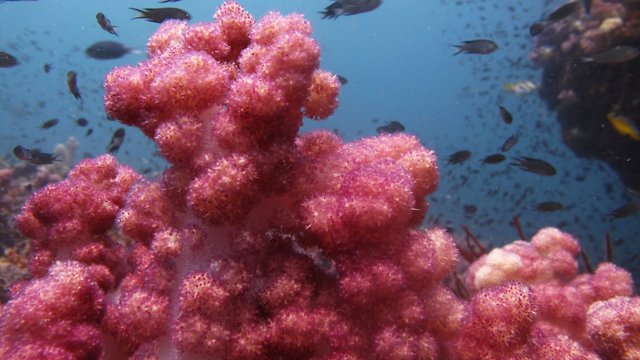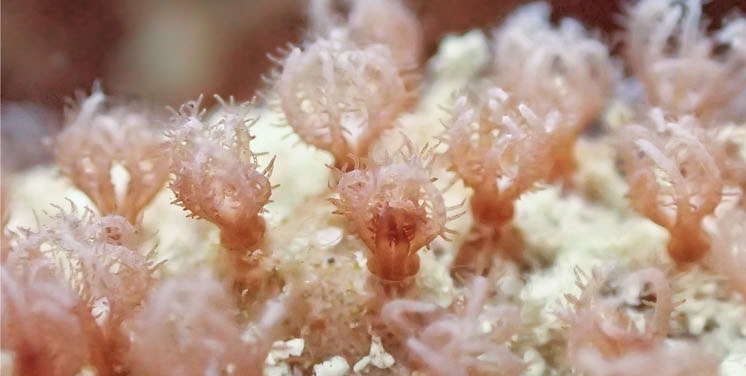Nanipora - the soft coral with a hard skeleton

There are two main types of corals in our oceans, hard corals and soft corals. Hard corals belong to the taxonomic order known as Scleractinia, they are known as 'hard' because they create a calcium carbonate skeleton that forms the foundation of the reef. Another trait all corals in this order share is that their polyps have tentacles in multiples of six. Soft corals belong to the order known as octocorals, named for the fact that the polyps in all corals of this order have tentacles in multiples of eight. They are called soft because although they may have a sort of skeleton (usually made of proteins), after they die they do not leave behind anything strong enough to contribute to the growth of the reef structure.

A common soft coral from the Gulf of Thailand
This is the generally accepted classification of corals, and most coral species can be fit nicely within one of these orders, even if taxonomists do shuffle them all around every once in a while. However, there is one recently described coral which seems to break the mold when it comes to following the rules. This coral is known as Nanipora, and although it is small and not very abundant, it is making waves in the world of reef scientists.
Nanipora was first described in Japan by Miyazaki & Reimer in 2015, where a total of just 8 colonies were found in a square kilometer of reef near Okinawa, Japan. The interesting thing about this coral was that although it has eight tentacles, and is an octocoral (soft coral) it creates a calcium carbonate skeleton. Because the coral was thought to be so rare, few scientists followed up on the story. However, that started to change in 2016 when a marine conservation instructor on the island of Koh Tao, Thailand discovered a patch of Nanipora, with over 143 colonies in just 300 square meters of reef area. The area where he found it is a common survey site, where researchers have done hundreds of surveys, but never noticed the Nanipora before. So it came as a big shock to everyone involved when it was confirmed through genetic analysis that this is likely the same species of coral as found in Japan. How is it that this unique and rare species of coral seems to exist in just two places on earth, separated by 3,500 km?

A close up shot of Nanipora, taken by Pau Urgell on Koh Tao, Thailand.
Another unique trait about Nanipora that the Koh Tao paper found (Urgell et al. 2017) was that this soft coral also contained symbiotic unicellular algae in its tissue, known as zooxanthellae. This relationship is ubiquitous amongst hard corals, but more rare amongst soft corals - contributing further to the surprises that Nanipora has to offer.
Sometimes in this day and age we may think that all there is to be discovered has already been found, that there are no new frontiers to explore. But, examples such as this highlight that science is an ever-on-going venture, that new findings are always being made that make us questions the status quo, and that even in places you have been hundreds of times surprises are always possible.
You can learn more about Nanipora in the following paper:
Plaza, P.U., Mehrotra, R., Scott, C.M. and Reimer, J.D., 2017. Rare zooxanthellate Nanipora octocoral (Helioporacea) in the Gulf of Thailand. Marine Biodiversity, pp.1-7.